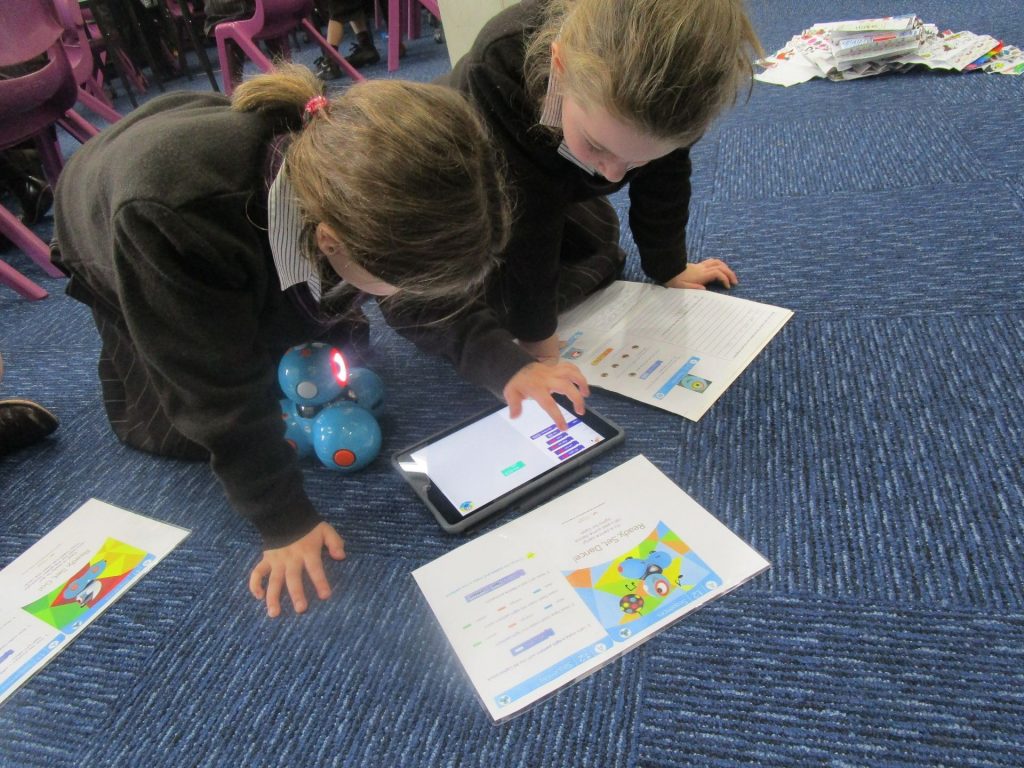Dot and Dash are robots which respond to voice, navigate objects, dance, sing and much more. Previously I blogged about them in 2014 when Dash was priced at $169 AUD each, and I bought 9 of them. Now, Dash is priced at around $290 AUD each. Six of my original Dash robots still work and only 3 have stopped, due to overuse, their wheels don’t move so I had to purchase another 3. Also, I originally paid $60 AUD each for 9 Dot robots and they all still work seamlessly. However, now they cost around $100 AUD each. So overall, I think I got my money’s worth and this shows they are robust robots (especially since they are handled by Year 1-2 students).
Previously, I also blogged about my experience so far using these robots. This blog post outlined how I didn’t feel that I was getting the most out these robots until I made some drastic changes by removing some of the apps from the iPads and purchasing a curriculum pack.
Well, now I am happy to share that our Year 2 teachers have had success using the robots this term, they love them and enjoy seeing the students program them. They have been using these robots to follow, describe and represent code (algorithms). Students are able to not only write code, but conceptualize code by the responses (output) their robots make.
When interviewing the students about their learning experiences, student 1 (name removed for privacy reasons) told me that she likes making Dash do ‘funny’ things such as dancing or making ‘really funny’ noises. I then had a very animated conversation with student 2, who also likes to code Dash to move in ‘funny’ ways. She said, “You can code him to make different patterns with his eyes. You can even feed him”. I questioned this, “Feed him?” Student 2 then showed me. “You just have to use the ‘If or Else’ block. This will hold your code and you can also repeat stuff so your robot gets fed heaps”. I learnt something new!
Students are presented with a range of challenge tasks for their robot and are then asked to record what Dot/Dash did when they ran their program, if they make any mistakes and if so, how did they fix their mistakes. Click on images to view a larger version.

